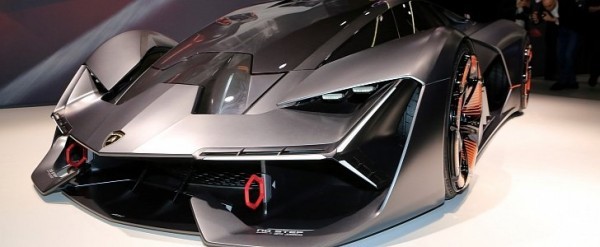The styling, as you can tell, easily pushes the envelope in terms of visual intrigue. Designed in collaboration with the MIT-Italy Program at the Massachusetts Institute of Technology, the Terzo Millenio “intends to write an important page in the future of super sports cars for the third millennium,” hence the name of the concept.
Even the finer details, such as the paint, are more sci-fi than meets the eye. Through micro-channels filled with healing chemistries, the Terzo Millenio reduces the risks of cracks propagating into the carbon fiber body shell. Getting straight to the point, the body shell can repair itself thanks to the latest advances in this field of expertise.
Although the drivetrain isn’t finished at this stage of the project, Lamborghini is motivated to move away from the battery technology of today in favor of supercapacitors. The Aventador, as a brief refresher, uses supercapacitors instead of a lithium-ion battery to store electrical energy for restarting the engine after a stop.
Getting down to the business end of the Terzo Millenio, the energy storage system works in conjunction with four electric motors, one for each wheel. Integrating the motors into the wheels is more than an engineering feat, with the aerodynamicists offered more freedom to squeeze out additional performance from the body shell.
Back on planet Earth, the replacement for the Aventador won’t go all-electric. The most Lamborghini could do to squeeze every ounce of performance from the V12-powered supercar is electrify the front axle, with the rear wheels left to the engine. 48-volt mild-hybrid technology is sure to make the cut, with Lamborghini also eyeing improved efficiency as Europe prepares for the Euro 6c emissions standard.
Until further notice, the Aventador SVJ will have to make do with 800 ponies.

